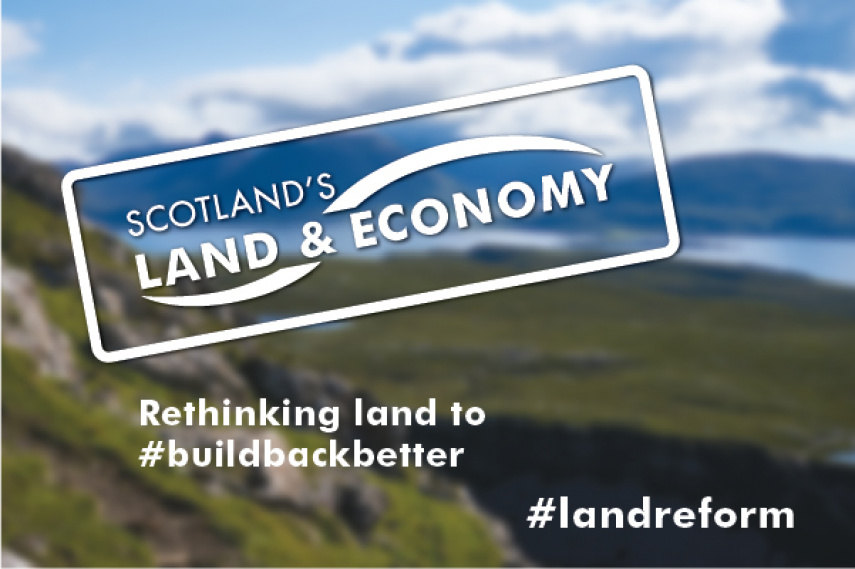
Land and collective wellbeing: fertile soil
Dr Katherine Trebeck

As part of the ‘Scotland’s Land & Economy’ series exploring the fundamental role of land in achieving Scotland’s post-pandemic recovery and renewal, Scottish Land Commission Chief Executive Hamish Trench and Dr Katherine Trebeck, Advocacy and Influencing lead at the Wellbeing Economy Alliance (WEAll), explore the connections between land and an economic system that delivers human and environmental wellbeing.
Ever stopped to think about how the land we stand on, live from, and work with shapes our economy? How it plays a part in influencing the distribution of income, the choices people can make and how communities function?
The Scottish Land Commission has joined the Wellbeing Economy Alliance (WEAll), a global collaboration of organisations working towards an economic system that delivers human and environmental wellbeing. This blog starts to explore why this connection makes so much sense.
Scotland is already a leading player in this agenda, putting in place some of the mechanisms needed to build a wellbeing economy – though there is much more to be done. In 2018 it established the Wellbeing Economy Governments Initiative (WEGo) together with New Zealand and Iceland (and now joined by Wales).
One area in which Scotland is well placed to embrace new thinking is the role of land reform in the shift to a wellbeing economy. Scotland’s ongoing land reform programme is a distinctive public policy approach, rooted in human rights, that seeks to make more of our land for more people. The Scottish Parliament has returned a number of times to land reform, reflecting people’s discomfort with the inequalities inherent in Scotland’s land ownership.
How land is owned and used matters to our collective wellbeing: it shapes our day-to-day spaces and environment, our ability to participate and influence change, our shared wellbeing. It is central to climate action, to a fair economy and to tackling inequality.
A wellbeing economy asks what kind of economy is needed – what we need more of and yes, what sort of economic activities need to be powered down because they hurt people and they hurt the environment.
Seeing the economy as in service of human and ecological wellbeing takes the conversation and political action beyond mitigating the adverse impacts of our current economy, to designing one that works ‘first time round’. For example, significant resource goes into transferring money through taxes and social security to make the gap between the richest and poorest a little less wide. A wellbeing economy seeks to stop that gap getting so wide in the first place.
This is where land is so fundamental.
The pattern of ownership and access to use of land sets conditions that determine the distribution of wealth, decision making and everyday wellbeing that flow through many parts of our lives. 51% of the UK’s net worth, or total wealth, is in land, while land is the basis for 11% of tax revenue. Recent studies also emphasise the significance of inherited wealth, much of it through land and property, in perpetuating inequalities across generations. So the discussion about land is not just about how it is used, but about how that huge store of value is created and shared.
We can see here in Scotland, in the UK and elsewhere discussion turning to wealth taxes, reflecting not just a practical need to increase public revenues, but to do so in a way that shifts the burden towards unearned income, releasing capital for more productive activity.
The fresh impetus given in Scotland’s Covid-19 response to community wealth building, including the pioneering approach of North Ayrshire Council, offers new ways to shape our economy from within communities, creating and retaining benefit and value locally. Scotland’s successful track record of community land ownership offers much that can be scaled up to support this approach.
This means asking challenging questions about power, decision making, access, use and ownership – questions that can’t be shied away from if Scotland is to build the wellbeing economy it has set its sights on. Fortunately, we’ve got some good examples to learn from and build on. Looking at places as diverse as Linwood, West Harris or Dumfries we can see the power of a new economic model being built from within the communities, and how important communities taking ownership of local land and buildings is in unlocking not just innovation and economic development but profound changes in community confidence and wellbeing.
Still our systems need to shift more so that these opportunities are normalised, rather than being the exception that proves the rule. There is much further to travel yet in exploring new models of ownership.
Scotland’s land reform programme shows this is about culture change as well as legislative change – and while it may be a long-term process there are changes we can make now. Scotland is the first country in the world to publish a Land Rights and Responsibilities Statement, a vision for the relationship between people and land. This is a clear signal of the culture change Scotland is embarked on, a powerful statement that can help drive our transition to a wellbeing economy. Moving to a wellbeing economy is about systems change, and that is what land reform can help deliver, through changes to the underlying structures that shape power and value.